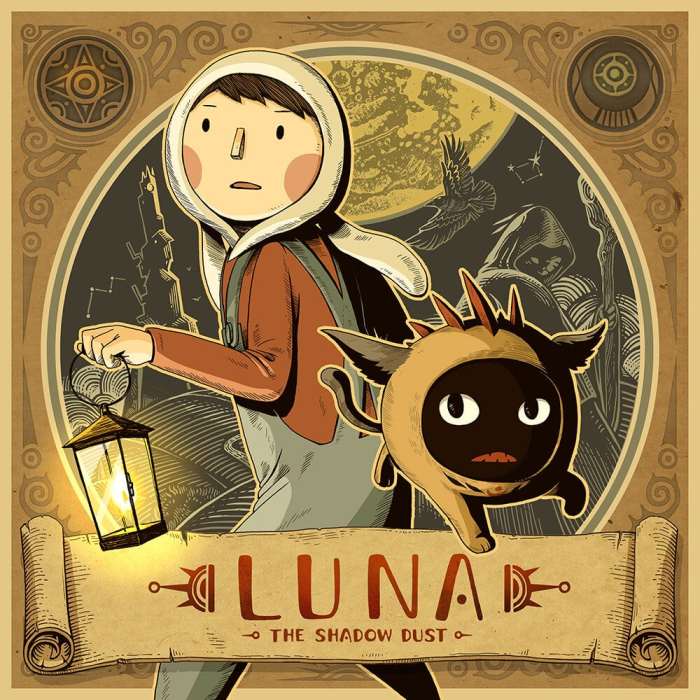
Here’s an artistic, hand-animated point-and-click adventure game. It’s pretty mesmerising to look at and boasts much charm throughout its journey.
LUNA: The Shadow Dust
As a genre, point-and-click games don’t really receive much attention—especially compared to the more bombastic blockbuster games in the industry.
But it’s also responsible for gems such as The Curse of Monkey Island (one of our favourite games of all time) and Grim Fandago. Both from LucasArts in the late 1990s.
LUNA is from Lantern Studio, a four person team consisting of Beidi Guo (art director), Fox (project manager), Wang Guan (game programmer), and Susie Wang (composer).
It’s taken numerous years to finalise the project, but on a visual level it’s certainly most striking. Like Forgotten Anne, in many respects.
The game begins with a nameless chap plunging down the sky. He’s saved by a magical force, though, who places him in a dilapidated tower.
He’s soon joined by a cute looking cat, who has magical powers.
After that, he explores around the tower with the aim of reaching the very peak to discover what’s happened to him.
This narrative plays out wordlessly. There’s no text. It’s a visual storytelling experience.
And, cripes, does LUNA: The Shadow Dust look good. It’s a beautiful thing indeed, an absolutely work of art. And certainly the best part of the game.
But… gameplay! For all its aesthetic worth, it doesn’t quite deliver an epic experience. It can be quite clunky and frustrating to play.
It’s also rather short, with the project’s production time clearly spent on the intricacies of the art style.
However, we couldn’t help but enjoy it. Sure, it needs refining in place, but this is Lantern Studio’s first game. And it’s accomplished and beautiful, playing out in dreamy fashion.
It’s a game you can just watch in action, like an animated film. The full walkthrough above takes you through the experience.
But if you want to get in there and play it, you can find the title on Steam. It’s £16 (about $20), which is quite pricey for an indie game.
And if you can overlook some of its issues, you’ll find a beautiful work of art that has buckets of charm, too.
Soundtrack
Susie Wang is responsible for the soundtrack on LUNA. It’s always interested us to wonder how composers go about creating game soundtracks.
It’s no surprise she plays the game first, plus takes inspiration from other titles. Journey is one such example, thatgamecompany’s award-winning 2012 effort.
She also flags up Samorost 3, a very quirky game from Amanita Design in 2016. The soundtrack reminds us of Krautrock legends Can a fair bit.
And, huzzah, she also mentions Ori and the Blind Forest. Of course, we’re big fans of Gareth Coker’s stunning work on that series.
And her work on LUNA: The Shadow Dust is very good indeed.
It’s fantastic modern technology can allow one person to go off and make the sounds of an entire orchestra.
It adds significant weight to small indie games, at a cost-effective rate. All it needs is someone super talented to do the job. Merci, Mz. Susie Wang!

Susie sounds like David Wise level awesome, eh?
LikeLiked by 1 person
Susie should change her name to David Wise. To cause much confusing merriment.
LikeLiked by 1 person